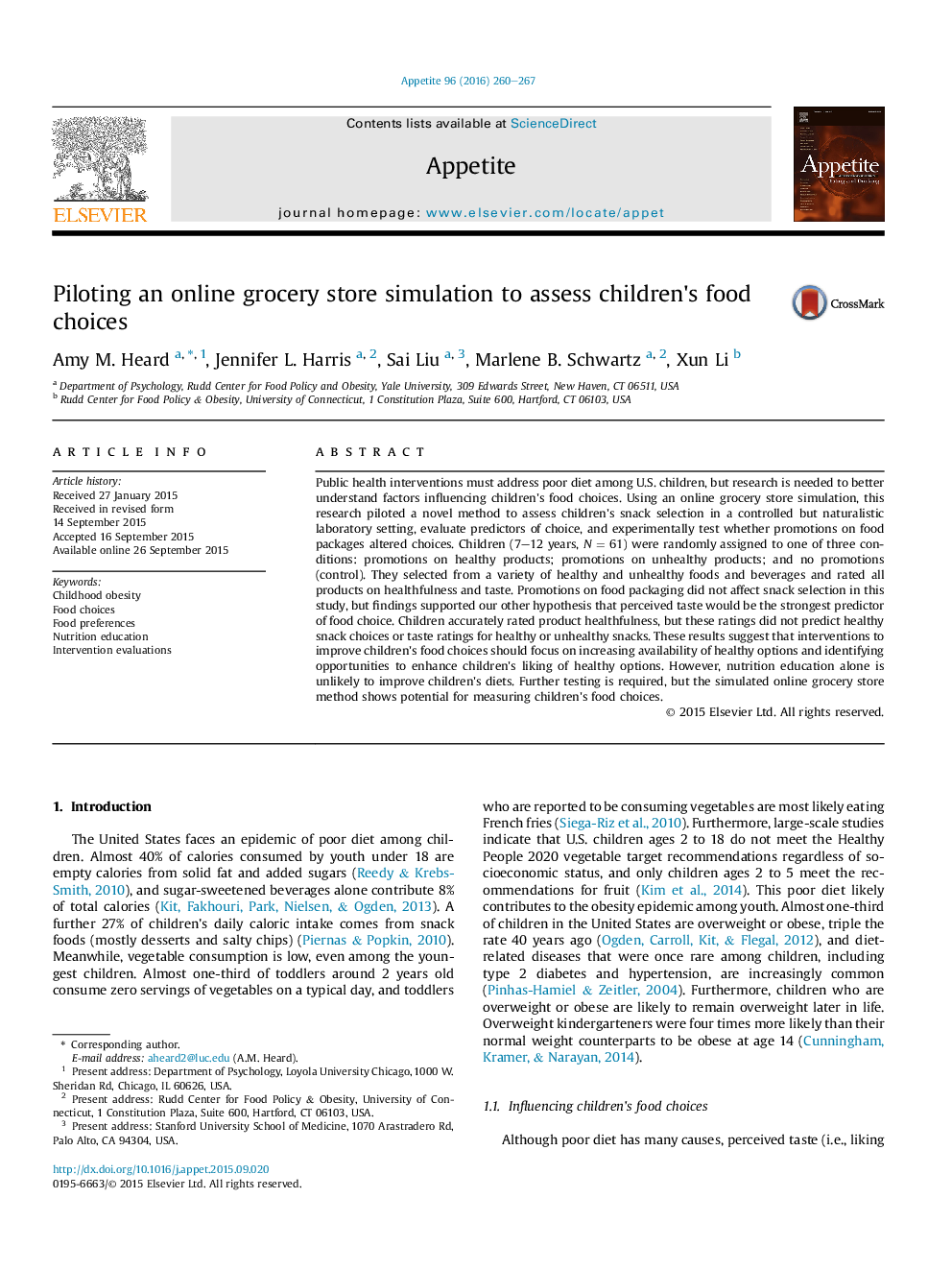| Article ID | Journal | Published Year | Pages | File Type |
|---|---|---|---|---|
| 7308216 | Appetite | 2016 | 8 Pages |
Abstract
Public health interventions must address poor diet among U.S. children, but research is needed to better understand factors influencing children's food choices. Using an online grocery store simulation, this research piloted a novel method to assess children's snack selection in a controlled but naturalistic laboratory setting, evaluate predictors of choice, and experimentally test whether promotions on food packages altered choices. Children (7-12 years, NÂ =Â 61) were randomly assigned to one of three conditions: promotions on healthy products; promotions on unhealthy products; and no promotions (control). They selected from a variety of healthy and unhealthy foods and beverages and rated all products on healthfulness and taste. Promotions on food packaging did not affect snack selection in this study, but findings supported our other hypothesis that perceived taste would be the strongest predictor of food choice. Children accurately rated product healthfulness, but these ratings did not predict healthy snack choices or taste ratings for healthy or unhealthy snacks. These results suggest that interventions to improve children's food choices should focus on increasing availability of healthy options and identifying opportunities to enhance children's liking of healthy options. However, nutrition education alone is unlikely to improve children's diets. Further testing is required, but the simulated online grocery store method shows potential for measuring children's food choices.
Related Topics
Life Sciences
Agricultural and Biological Sciences
Food Science
Authors
Amy M. Heard, Jennifer L. Harris, Sai Liu, Marlene B. Schwartz, Xun Li,
